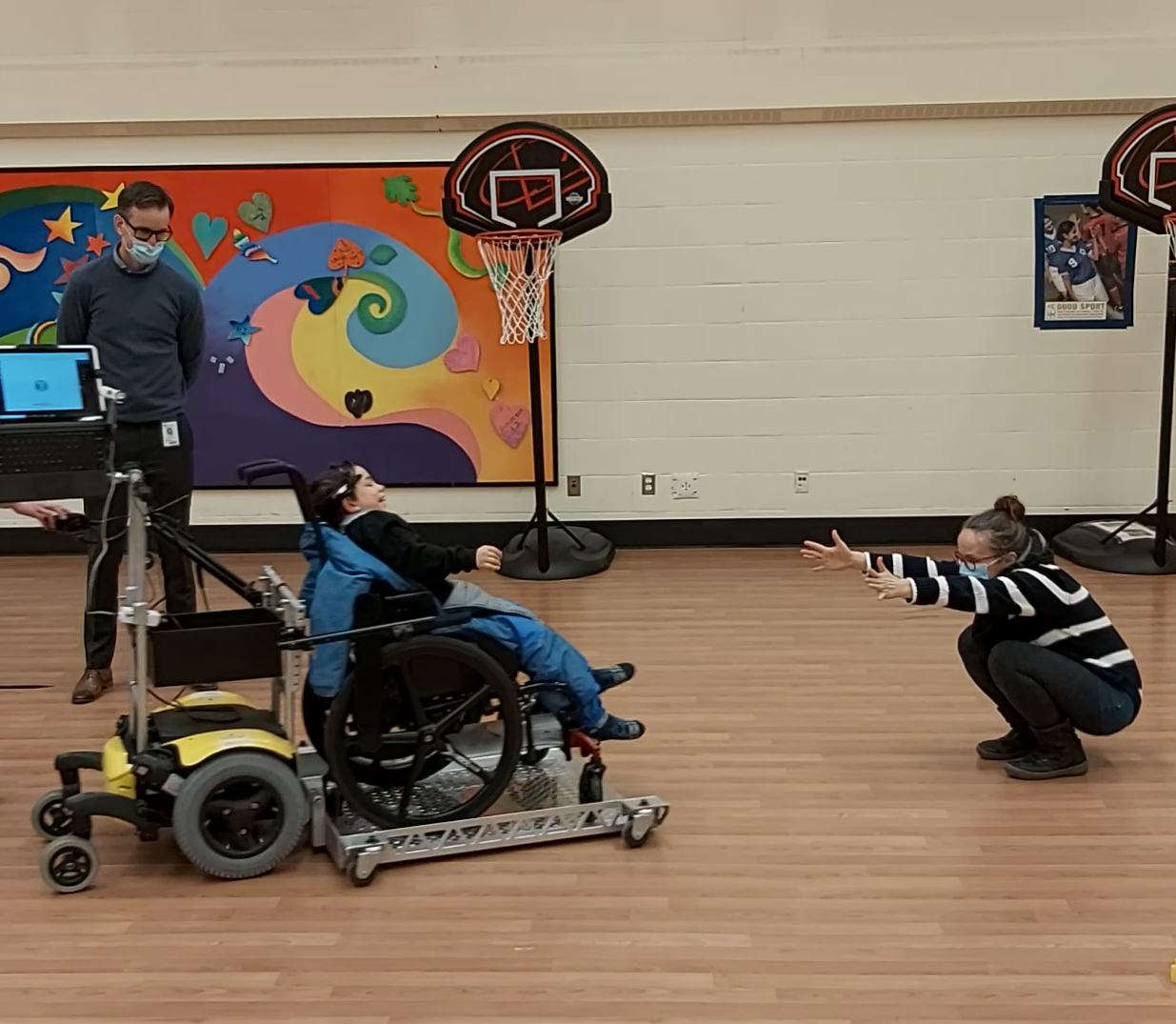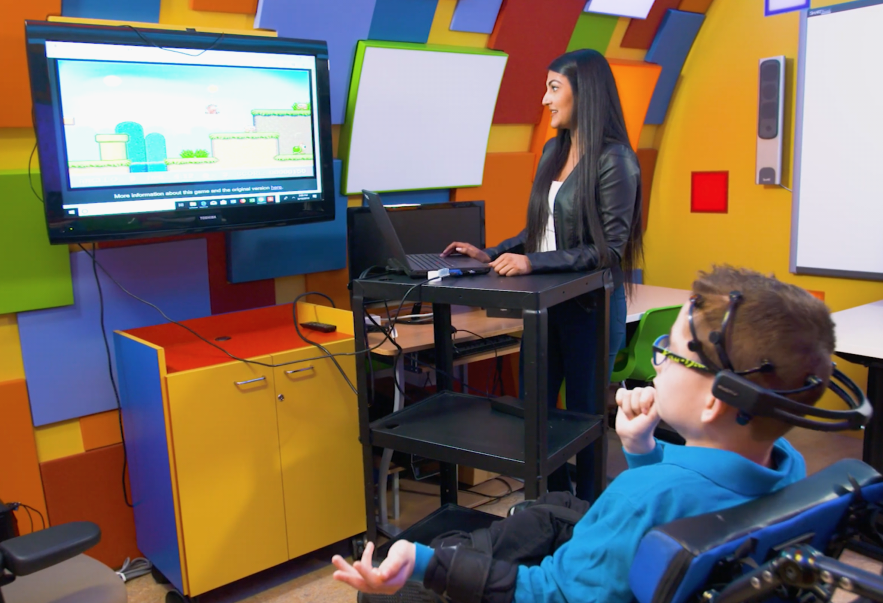There is an undeniable “cool” factor when it comes to brain-computer interfaces (BCI). However, the telekinetic novelty of being able to control devices with one’s mind is nothing compared to the practical applications already making an impact for those with special needs.
Brain-Computer Interfaces for Kids
“It’s being actively used mostly in the special-needs community[…] to have kids with disabilities control robotics-enabled toys and gadgets, to be able to manipulate things that they normally wouldn’t, because they don’t have use of their hands or don’t have the speech to enable things that you and I would,” said Kim Old, Chief Commercial Officer of EMOTIV, a San Francisco-based neurotechnology solutions manufacturer.
Old cited the Calgary Pediatric Brain-Computer Interface Program as an example. Known as BCI 4 Kids, the initiative gives children the opportunity to leverage BCI technology. BCI 4 Kids uses solutions from EMOTIV and other vendors. Eli Kinney-Lang, a post-doctoral researcher at the University of Calgary, said the EMOTIV headsets strike a balance between affordability and effectiveness, enabling families to take the hardware home with them. However, Kinney-Lang said it’s a matter of tailoring solutions to each child, using various types in the process.
“When we look at other sorts of activities and actions, things like communication might require different hardware [while] intense research activities and questions surrounding those things will require different hardware solutions,” he said. “We look at what the families want to do. We pair that with what hardware, headset might work best with it and then come up with solutions and then iterate through that process.”
Joining Kinney-Lang on a call with 6GWorldTM were fellow-team-members Erica Floreani, a BCI Technologist, and Dion Kelly, a Neuroscience PhD candidate. Kelly said the work has been rewarding. Seven families are enrolled in the program, while four have consistently stuck with it as it’s transitioned to a “Bringing BCI into the Home” project, with the COVID-19 pandemic having put in-person sessions on hold.

“It’s made a huge impact for the families in the program, and then everybody else has been experiencing their accomplishments as well. One of the kids in particular has really taken a liking to the painting activity that is BCI-facilitated and that has really garnered quite a bit of attention on social media and within institutions and groups even outside of Canada, across the globe. It’s been amazing for the families who are taking part in this program and it’s been amazing for others to see what you can do with BCI and the impact it can have for kids,” she said.
The Quest for Lower Latency
Other available activities include driving remote cars and video gaming. Even so, the technology isn’t ready for mainstream gaming. Old explained pressing buttons on a controller is generally quicker than applying mental commands to control an object.
“People would think ‘BCI within gaming, that makes sense,’ but[…] you have to be able to set baselines in terms of your resting state and then also apply specific brain patterns for controlling something, whether it’s switching the light on or off or selecting a specific player within a virtual world. And then that user has to be able to remember that pattern and initiate it whenever they want that action to happen,” she said.
“Granted, you’re talking about a micro-second delay, but, when you’re talking about just being able to button-mash and be able to trigger that action quickly, somebody that is able-bodied would have more success button-mashing.”
Kinney-Lang similarly called latency the bottleneck of BCI. He also highlighted signal quality as a challenge and brought up the Elon Musk-co-founded Neuralink, which is gaining a high profile within the sector for its work with implant technology.
“They have an advantage in the BCI realm, because they are recording directly from the surface of the brain, whereas we are working with signals that have been disrupted and filtered through brain tissue, then through cerebral spinal fluid, then the skull and the skin, and then eventually, where we’re recording it, at the very top there just on sensors on the head,” he said.
As a result, activities need to be planned to a greater degree so that the latency doesn’t become as noticeable. Activities that require precise timing aren’t going to be as successful as ones that can be accomplished within the range of latency that exists at the moment, he added.
“I live a lot in the gaming world, so I do a lot of the game-development stuff,” he said. “Some of the precision of [Super Mario Bros. for example] is what makes it super-exciting to play. So, you need to precisely be able to time for a jump up in order to get on top of the next enemy.

“With BCI, if you have 300ms-lag delays between inputs – and[…] it might be half a second, it might be longer, shorter – then suddenly even just trying to jump over an enemy becomes extraordinarily difficult. So, using BCI in existing applications and games can be quite difficult, because they’re not made for that sort of latency.”
Adapting BCI Advancements for Kids
It’s an obstacle that can’t be worked around, especially in the pediatric, non-invasive world where implants present a riskier-than-normal proposition. Kinney-Lang presented ongoing brain development as one reason. Floreani added the ongoing development within the industry itself as another potential hold-up.
“If I get this done now, what kind of advancements are going to come in the next five years? Should I wait and see how much this technology can develop in the next five years? When would be the best time to get this implanted? So, there’s those type of considerations as well that would make it a toss-up,” she said.
Nevertheless, the University of Calgary team, which is part of the BCI-CAN Network based in Canada, said it’s always looking at progress being made in the larger BCI field. For example, Kinney-Lang pointed to work done by a group at University of California, San Francisco led by Eddy Chang.
“They had individuals speak and then imagine that speech and they were able to then map the neurons and provide a computerised voice from imagined speech, which was amazing,” he said. “I would love to get to that level, but, for the time being, it’s more trying to see ‘Okay, they did imagined speech with this invasive technology. They had access to this. What can we learn from that, and is there a way for us to translate that to a non-invasive world[…] that’s safe and secure and that families would be excited about?’”
The BCI-CAN Network also includes the I CAN Centre for Assistive Technology at the Glenrose Rehabilitation Hospital in Edmonton (partnered with the University of Alberta) and the PRISM Lab at the Holland Bloorview Kids Rehabilitation Hospital (partnered with the University of Toronto). However, Kinney-Lang said it’s unofficially expanded south of the border, with the National Center for Adaptive Neurotechnologies (NCAN) in Albany, New York and Oregon Health & Science University in Portland considered members. For example, the University of Calgary team is working with NCAN, trying to make a device called a speller, that adults use, also work for kids.
Ultimately, the growth of the network is reflected in that of the BCI 4 Kids program. Said Floreani, “We saw some early success and then we had groups in Edmonton and Toronto kind of do something very similar. Kids [have been helped] not just in Calgary, but Edmonton and Toronto as well. So it wasn’t just our kids benefiting from that whole program. We’ve seen it expand across the network.”
Feature image courtesy of PopTika (via Shutterstock).







